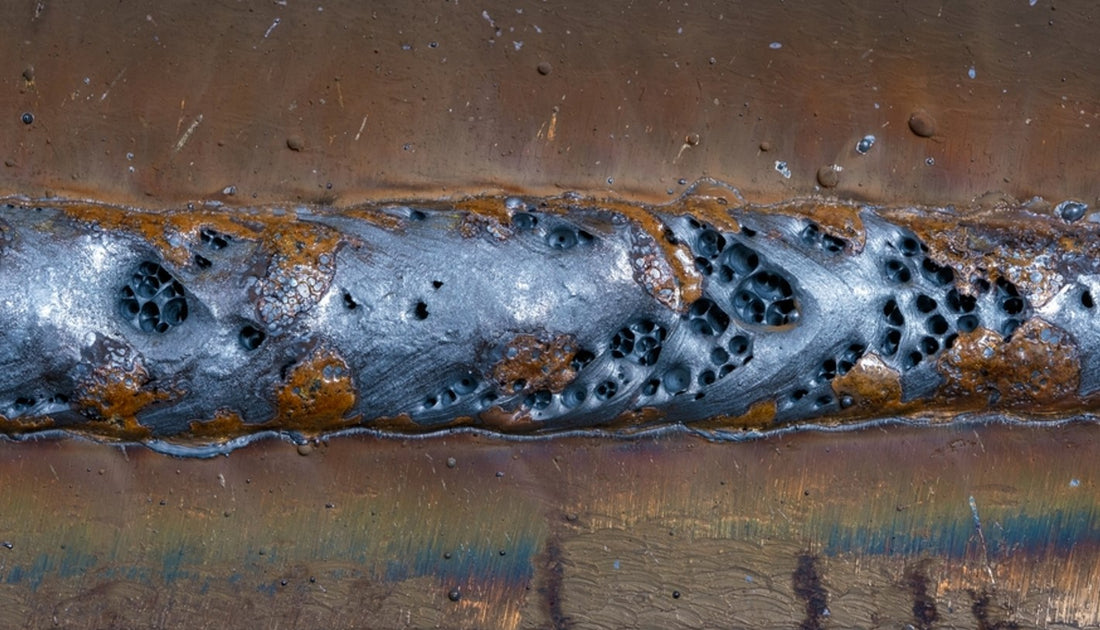What is Porosity in Welding: Trick Factors and Their Impact on Weld Quality
What is Porosity in Welding: Trick Factors and Their Impact on Weld Quality
Blog Article
The Science Behind Porosity: A Comprehensive Guide for Welders and Fabricators
Understanding the detailed mechanisms behind porosity in welding is crucial for welders and producers pursuing remarkable craftsmanship. As metalworkers explore the midsts of this phenomenon, they uncover a world controlled by different factors that affect the development of these small gaps within welds. From the structure of the base materials to the intricacies of the welding process itself, a wide variety of variables conspire to either exacerbate or relieve the visibility of porosity. In this extensive guide, we will certainly unwind the scientific research behind porosity, discovering its impacts on weld high quality and introduction progressed strategies for its control. Join us on this journey with the microcosm of welding flaws, where precision satisfies understanding in the quest of flawless welds.
Comprehending Porosity in Welding
FIRST SENTENCE:
Examination of porosity in welding discloses essential insights right into the stability and high quality of the weld joint. Porosity, characterized by the presence of tooth cavities or voids within the weld metal, is an usual worry in welding processes. These spaces, otherwise appropriately dealt with, can jeopardize the structural integrity and mechanical buildings of the weld, causing possible failures in the completed product.

To discover and evaluate porosity, non-destructive testing methods such as ultrasonic screening or X-ray evaluation are frequently used. These techniques permit for the recognition of interior issues without compromising the honesty of the weld. By examining the dimension, form, and distribution of porosity within a weld, welders can make enlightened choices to boost their welding procedures and achieve sounder weld joints.

Aspects Affecting Porosity Formation
The occurrence of porosity in welding is influenced by a myriad of elements, ranging from gas protecting efficiency to the details of welding criterion settings. Welding parameters, consisting of voltage, existing, take a trip speed, and electrode kind, likewise effect porosity formation. The welding method utilized, such as gas steel arc welding (GMAW) or protected steel arc welding (SMAW), can affect porosity formation due to variants in heat circulation and gas protection - What is Porosity.
Effects of Porosity on Weld Top Quality
The presence of porosity additionally deteriorates the weld's resistance to corrosion, as the entraped air or gases within the voids can respond with the surrounding setting, leading to destruction over time. In addition, porosity can hinder the weld's capacity to stand up to pressure or effect, additional endangering the overall top quality and integrity of the welded framework. In important applications such as aerospace, automobile, visit the website or structural constructions, where safety and security and durability are paramount, the destructive results of porosity on weld high quality can have extreme consequences, highlighting the significance of reducing porosity via appropriate welding methods and treatments.
Strategies to Decrease Porosity
To enhance the quality of welded joints and ensure structural honesty, welders and fabricators utilize particular strategies focused on reducing the development of spaces and tooth cavities within the product during the welding procedure. One efficient technique to minimize porosity is to guarantee correct material prep work. This includes comprehensive cleansing of the base steel to remove any type of impurities such as oil, grease, or moisture that could add to porosity formation. Furthermore, making use of the appropriate welding parameters, such as the right voltage, current, and take a trip rate, is important in preventing porosity. Preserving a regular arc size and angle throughout welding likewise helps in reducing the probability of click reference porosity.

Using the appropriate welding strategy, such as back-stepping or utilizing a weaving activity, can also aid distribute warmth equally and reduce the possibilities of porosity formation. By applying these methods, welders hop over to these guys can efficiently minimize porosity and create premium welded joints.

Advanced Solutions for Porosity Control
Carrying out advanced technologies and innovative techniques plays an essential function in attaining premium control over porosity in welding processes. One sophisticated solution is the use of advanced gas mixtures. Securing gases like helium or a mix of argon and hydrogen can assist lower porosity by offering far better arc security and enhanced gas insurance coverage. Additionally, using advanced welding strategies such as pulsed MIG welding or modified environment welding can additionally help alleviate porosity issues.
Another innovative service entails making use of sophisticated welding devices. As an example, utilizing equipment with integrated functions like waveform control and sophisticated source of power can improve weld high quality and reduce porosity dangers. The implementation of automated welding systems with precise control over parameters can considerably minimize porosity defects.
Moreover, including innovative monitoring and evaluation innovations such as real-time X-ray imaging or automated ultrasonic screening can assist in spotting porosity early in the welding process, allowing for prompt rehabilitative activities. In general, integrating these sophisticated solutions can substantially boost porosity control and improve the total quality of bonded elements.
Conclusion
In conclusion, recognizing the science behind porosity in welding is important for welders and producers to generate top notch welds. By determining the elements influencing porosity formation and carrying out techniques to minimize it, welders can improve the general weld quality. Advanced remedies for porosity control can additionally enhance the welding process and make sure a strong and reliable weld. It is important for welders to continually inform themselves on porosity and implement finest techniques to attain optimal outcomes.
Report this page